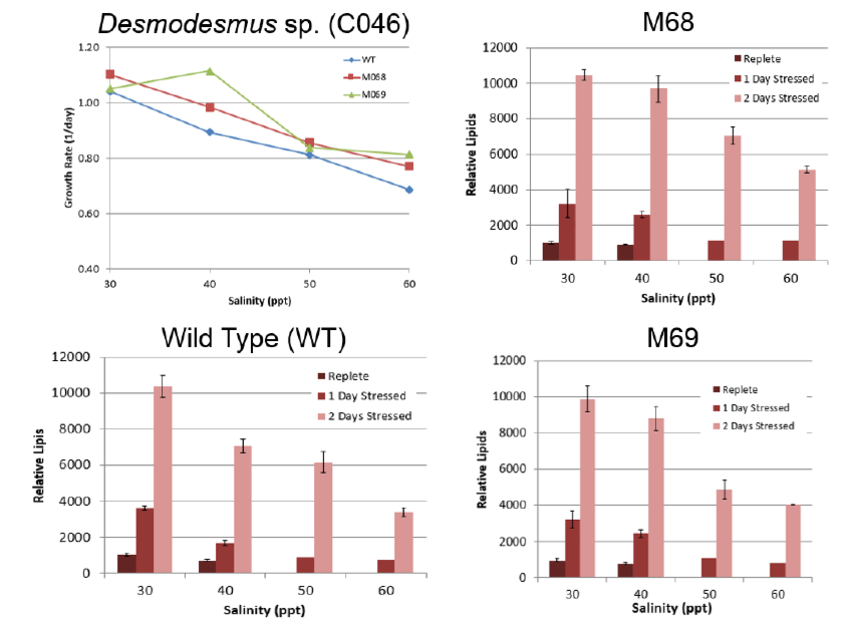Large-Scale Production of Marine Microalgae for Fuel and Feeds
We present the results from sustained tonne-quantity production of two novel strains of marine microalgae, the diatom Staurosira and the chlorophyte Desmodesmus, cultivated in a hybrid system of 25-m 3 photobioreactors and 400-m 2 open ponds at a large-scale demonstration facility, and then apply those results to evaluate the performance of a 100-ha Base Case commercial facility assuming it were built today. Nitrogen fertilization of 2-d batch cultures in open ponds led to the greatest yields – from both species – of ~75 MT ha −1 yr −1 biomass, and ~30 MT ha −1 yr −1 lipid, which are unprecedented in large scale open pond systems. The process described here uses only seawater, discharges no nitrogen or phosphorus in any form, and consumes CO 2 at 78% efficiency. We estimate the capital cost of a 111-ha Base Case facility at $67 million in Hawaii, where actual production was performed, and $59 million on the Gulf Coast of Texas. We find that large-diameter, large-volume PBRs are an economical means to maintain a continuous supply of consistent inoculum for very short-period batch cultures in open ponds, and thus avoid biological system crashes that otherwise arise in longer-term pond cultures. We recommend certain improvements in cultivation methods that could realistically lead to yields of 100 MT ha − 1 yr −1 biomass and N 50,000 L ha −1 yr −1 algal oil. Comprehensive techno-economics and life cycle assessment of 20 end-to-end production lineups, based on the cultivation results in this paper, are presented in a companion paper by Beal et al. [1].




